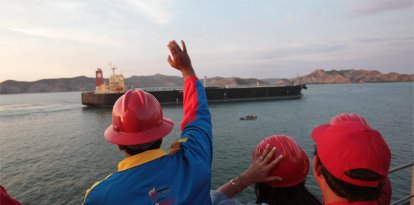There was no "ecocide" on Easter Island: a study disproves popular theory
The research exposes that the collapse of the Rapa Nui civilization was not caused by the overexploitation of resources.

Easter Island
A recent study presents significant findings that reassess the history of Easter Island and challenges the widespread belief that the agricultural practices of its ancient inhabitants led to the collapse of their civilization.
The paper, published in the journal Science Advances and title The characterization of agricultural production across the island challenges the hypothesis of Rapa Nui's demographic collapse., recalls that Rapa Nui (better known as Easter Island) has often been cited as an example of how overexploitation of limited resources can result in demographic disaster.
This, based on the practice of agriculture called "slash and burn", in which palm trees were felled and set on fire to clear land for agriculture and to use the wood for tool construction. In addition to this, they had a practice of using rocks in gardening, to improve soil quality.
Challenging the traditional narrative
The traditional narrative suggests that the Rapa Nui islanders committed "ecocide" primarily by cutting down palm trees, used for construction, as fuel and to clear agricultural land. This practice, known as "slash and burn", involved felling palm trees and setting them on fire to clear land and use the wood in the construction of tools. In addition, the island's inhabitants have been criticized for devoting significant effort tobuilding and transporting the massive moai (stone statues), which allegedly contributed to a catastrophic collapse of their population.
Rock gardening, an agricultural practice that involved the use of rocks to improve soil quality, has also been viewed critically within this narrative, suggesting that overexploitation of limited resources led to environmental degradation and demographic collapse on the island.
However, the new study argues otherwise. The researchers point out that the settlers found ways to stabilize for centuries despite the island's severe limits.
Rock gardening actually improved soil productivity, increasing available nutrients and retaining moisture, which was vital to the islanders' subsistence.
"Considering the benefits of rock gardening in increasing soil productivity and thus plant growth, its practice was a vital part of pre-contact Rapanui subsistence," states the article which notes that "nearly half of the Rapanui diet consisted of terrestrial foods," underscoring the importance of rock gardening to the sustainability of the population.
Agricultural impact assessment
To assess the impact of these agricultural practices, the researchers used shortwave infrared (SWIR) satellite imagery and machine learning techniques, concluding that the maximum population supported by rock gardening was significantly lower than previously claimed.
Estimates from the study indicate that the maximum population was approximately 3,901 individuals, in contrast to the 17,000 individuals estimated by previous research. This challenges the notion that the island population declined dramatically before the arrival of Europeans.
Persistence of the myth
The authors of the study acknowledge that the myth of demographic collapse remains popular outside of academia. The article states that "despite recent archaeological literature that disproves ideas about Malthusian overpopulation, the premise that Rapa Nui society caused its own demise due to unsustainable resource use and uncontrolled population increase has become widely popularized."
This study invites a reevaluation of historical narratives about Rapa Nui, underscoring the need for a more nuanced analysis of agricultural practices and their impact on island demography. The researchers suggest that better understanding the extent and role of rock gardens is crucial for an accurate assessment of the island's environmental carrying capacity prior to European contact.
RECOMMENDATION





















